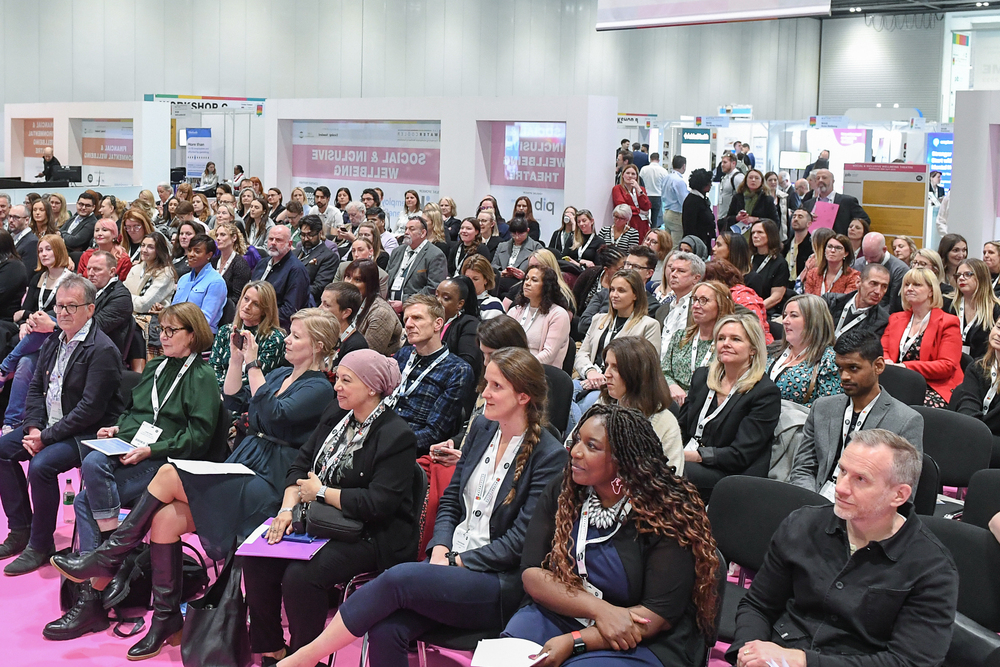Almost seven hours. That’s the average amount of time each of us spends looking at a screen every day.
When you consider that we spend roughly a third of each 24-hour period sleeping, that’s a staggering amount of our waking hours; we’re pretty much glued to a laptop, phone or tablet at any opportunity we get.
In many ways, the advent and subsequent explosion of technology has improved our lives hugely, offering us opportunities to work remotely, connect with far-away loved ones, and live in a truly global community.
But it’s not without its downfalls too – and that’s exactly why we need to tread carefully as we collectively and individually learn to balance the tech-filled fast pace of the 21st century with our physical, emotional and mental wellbeing needs.
Tech isn’t cancelled
Talking about improving our relationships with digital isn’t about throwing away our phones, living off-grid or rewinding time back to the so-called ‘good old days’. There are so many benefits to technology, and it’s so integrated into our daily lives, that a complete ban is neither practical nor particularly desirable.
But, as a growing body of research shows how over-use or over-reliance can result in a swath of physical and mental health issues, conscientious companies are beginning to realise not only how they can support their teams to prevent these negative impacts, but also why it makes sense from a business perspective.
Digital downsides
- ‘Excessive digital use’ has been linked with impaired emotional and social intelligence.
- Looking at a screen for more than six hours a day (remember – the average is above this!) could increase the risk of experiencing moderate to severe depression.
- Physically, the WHO has linked excessive screen time with reduced sleep, day/night reversal, malnutrition, headaches, and neck pain.
Is it me or you?
Okay, so we know what the problem is (overuse and overreliance on technology), we know the potential outcomes (both physically and mentally), but whose responsibility is it to put solutions in place to reduce the effects?
Employers could easily overlook digital wellbeing or disregard it as a personal issue for each team member to deal with, especially given an ever-increasing list of management priorities.
But there’s a real danger in doing so, because the personal side effects will have an impact on a business as a whole. And conversely, there are many benefits to be had from encouraging employees to have better relationships with tech.
- The physical and emotional problems associated with burnout, stress, being unable to switch off from work, and feeling too tied to technology often lead to one of two things: absenteeism or presenteeism. Costing more than £90billion combined each year, these two –isms have a devastating impact, especially in smaller companies where there simply aren’t excess resources (either time or money wise) to cover the gaps.
- They say ‘no man is an island’ and this has to be taken into account when we think about wellbeing at work. It only takes one member of a team to be stressed, anxious or struggling to bring down morale and productivity. Plus, if the company is lacking in the kind of wellbeing policies and practices which would help one employee feel happier and healthier, then in all likelihood this is likely to be a problem for far more than just one person.
Five fast fixes
When it comes to wellbeing, it’s never an easy fix (‘turn it off and turn it back on again’ doesn’t work in this case unfortunately), but there are policies and practices that you can implement which will make a difference. And, it doesn’t have to cost the earth.
- Recognise the signs: team members might not directly tell you they’re struggling (indeed, they might not even recognise the links between technology and their wellbeing themselves) but you can take the time to be aware of them sending emails outside of work hours or on annual leave, complaining of headaches or difficulty sleeping, or other tell-tale signs.
- Face up: video calls may be here to stay thanks to their convenience and the rise in remote working, but there’s no replacement for face-to-face contact so taking opportunities to meet in person can reduce the onus you’re placing on your team to be online throughout the working day.
- Take a break: we’re all guilty of working flat out and then realising we’ve not looked away from our screen for hours. Managers and team leaders need to be encouraging regular breaks and leading by example (‘do as I do’).
- Tech-free time: opportunities to catch up and share time without relying on technology are vital, especially when we’re looking to bring teams together after long periods apart while working from home.
- Ask: These three letters sum up how employers can start to build a positive culture around digital workplace wellbeing. Ask your team how they’re feeling, how things can improve, and listen to their responses so you can give them proper consideration.
About the author:
Stephanie Henson is the founder of techtimeout, the digital workplace wellbeing company which works with companies to ensure they’re bettering their employees’ relationships with technology. Far from aiming to demonise tech, Steph’s aim is to highlight how important digital relationships are within the wider context of team health and wellbeing. The organisation runs an annual techtimeout Tuesday event each November, inviting everyone to take some time away from screens for part of their day – as well as hosting training and sharing resources with organisations and individuals all year round. Visit www.techtimeout.co.uk/guide to read more about the business benefits of looking after your team’s digital wellbeing.

















